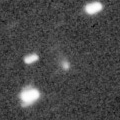
|
It brightened up to 15.1 mag in February (Feb. 1, Ken-ichi Kadota). It was visible at 7-8 mag between Apr. 7-9 in the SWAN images. Now it is not observable. In the Northern Hemisphere, it will appear at 6 mag in mid May, and it stays observable in good condition after that while the comet will be fading. In the Southern Hemisphere, it is not observable until August.
Date(TT) R.A. (2000) Decl. Delta r Elong. m1 Best Time(A, h)
Apr. 16 2 22.56 -0 2.5 1.160 0.329 15 5.5 20:01 (101,-15)
Apr. 23 3 2.39 5 55.2 0.887 0.294 16 4.4 20:09 (106,-10)
|

|
It has not been observed yet in this apparition. It will brighten very rapidly up to 9 mag in May. The condition is very bad in this apparition. It is observable only in the extremely low sky from mid May to mid July in the Northern Hemisphere, or from early June to early August in the Southern Hemisphere.
Date(TT) R.A. (2000) Decl. Delta r Elong. m1 Best Time(A, h)
Apr. 16 1 38.25 8 42.4 1.594 0.591 1 10.0 20:01 (115,-18)
Apr. 23 2 23.42 13 11.1 1.552 0.560 5 9.4 20:09 (117,-13)
|
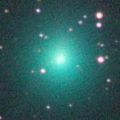
|
It brightened very rapidly up to 9.3 mag in March (Mar. 24, Michael Jager). Now it is not observable. In the Southern Hemisphere, it will appear in the morning sky in late May. Then it stays observable in good condition after that. In the Northern Hemisphere, it will never be observable again.
Date(TT) R.A. (2000) Decl. Delta r Elong. m1 Best Time(A, h)
Apr. 16 1 27.98 19 46.1 1.981 1.008 9 9.6 3:58 (237,-10)
Apr. 23 1 42.39 16 23.4 2.027 1.033 6 9.8 3:47 (240,-12)
|
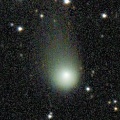
|
Now it is bright as 11.3 mag (Apr. 7, Osamu Miyazaki). The brightness evolution is slower than originally expected. It is expected to be observable at 7 mag for a long time from 2022 to 2023. In the Northern Hemisphere, it stays observable in good condition until autumn. However, it is not observable at the high light from autumn to 2023 summer. In the Southern Hemisphere, it stays observable in good condition for a long time.
Date(TT) R.A. (2000) Decl. Delta r Elong. m1 Best Time(A, h)
Apr. 16 18 55.04 11 46.7 3.167 3.447 97 10.1 3:58 (316, 60)
Apr. 23 18 53.90 11 47.6 3.004 3.383 103 9.9 3:47 (324, 63)
|

|
Now it is 10.1 mag (Apr. 6, Osamu Miyazaki). It will be getting lower after this. In the Northern Hemisphere, it will be unobservable in May. In the Southern Hemisphere, it stays observable until July.
Date(TT) R.A. (2000) Decl. Delta r Elong. m1 Best Time(A, h)
Apr. 16 6 51.88 14 40.7 3.752 3.661 77 10.3 20:01 ( 72, 47)
Apr. 23 6 57.08 13 48.2 3.866 3.677 71 10.3 20:09 ( 77, 41)
|
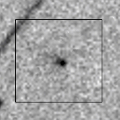
|
Now it is 11.3 mag (Apr. 2, Thomas Lehmann). In the Northern Hemisphere, it stays extremely low until spring. In the Southern Hemisphere, it stays observable at 11 mag until June.
Date(TT) R.A. (2000) Decl. Delta r Elong. m1 Best Time(A, h)
Apr. 16 22 18.07 -10 38.9 1.962 1.580 53 10.9 3:58 (290, 9)
Apr. 23 22 36.80 -9 8.9 1.939 1.595 55 11.0 3:47 (288, 10)
|
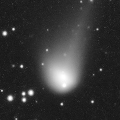
|
Now it is bright as 11.6 mag (Apr. 5, Chris Wyatt). It stays observable at 11-12 mag until July.
Date(TT) R.A. (2000) Decl. Delta r Elong. m1 Best Time(A, h)
Apr. 16 11 46.60 -18 3.3 3.351 4.266 152 11.5 22:08 ( 0, 37)
Apr. 23 11 45.12 -16 26.5 3.384 4.261 146 11.5 21:39 ( 0, 39)
|
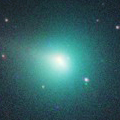
|
Now it is bright as 10.0 mag (Apr. 6, Osamu Miyazaki). It will be fading after this. In the Northern Hemisphere, it stays observable in excellent condition for a long time. In the Southern Hemisphere, it stays extremely low after this.
Date(TT) R.A. (2000) Decl. Delta r Elong. m1 Best Time(A, h)
Apr. 16 5 19.53 40 41.1 1.841 1.562 58 11.6 20:01 (117, 40)
Apr. 23 5 46.42 41 51.0 1.917 1.606 56 11.9 20:09 (119, 39)
|
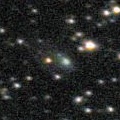
|
Now it is very bright as 10.6 mag (Apr. 2, Thomas Lehmann). It will brighten up to 10-11 mag from spring to summer. In the Southen Hemisphere, it stays observable in good condition for a long time after this. In the Northern Hemisphere, it is hardly observable after this.
Date(TT) R.A. (2000) Decl. Delta r Elong. m1 Best Time(A, h)
Apr. 16 21 8.08 -33 15.6 1.886 1.921 76 12.2 3:58 (317, 5)
Apr. 23 21 18.17 -37 39.3 1.729 1.889 82 12.0 3:47 (321, 3)
|
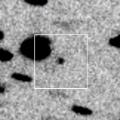
|
Now it is 14.3 mag (Apr. 9, Ken-ichi Kadota). It stays 12-13 mag for a while. But actually, it is fainter than this ephemeris recently. It is observable in excellent condition in the Southern Hemisphere. It locates low until May in the Northern Hemisphere.
Date(TT) R.A. (2000) Decl. Delta r Elong. m1 Best Time(A, h)
Apr. 16 20 59.29 -21 55.1 1.536 1.598 74 12.3 3:58 (311, 15)
Apr. 23 21 17.44 -21 31.9 1.505 1.617 77 12.4 3:47 (311, 15)
|
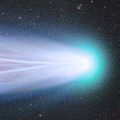
|
It brightened up to 3 mag from mid December to late December. Now it is fading. It has already faded down to 12.2 mag (Apr. 2, Thomas Lehmann). It is observable in good condition in the Southern Hemisphere. It is getting observable again also in the Northern Hemisphere.
Date(TT) R.A. (2000) Decl. Delta r Elong. m1 Best Time(A, h)
Apr. 16 20 42.77 -36 37.9 1.837 1.979 82 12.8 3:58 (323, 6)
Apr. 23 20 29.26 -37 18.7 1.784 2.079 92 12.9 3:47 (329, 9)
|

|
Now it is 14.4 mag (Apr. 5, Chris Wyatt). It was expected to brighten up to 13 mag in spring. But actually, it is fainter than this ephemeris recently. In the Southern Hemisphere, it stays observable in good condition for a long time. In the Northern Hemisphere, it is not observable until autumn.
Date(TT) R.A. (2000) Decl. Delta r Elong. m1 Best Time(A, h)
Apr. 16 6 43.30 -56 42.1 3.006 3.191 91 13.4 20:01 ( 23, -9)
Apr. 23 6 36.59 -54 4.5 3.050 3.179 88 13.4 20:09 ( 29,-11)
|
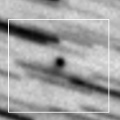
|
Now it is 13.2 mag (Apr. 10, Ken-ichi Kadota). It is expected to brighten up to 11 mag in summer. In the Northern Hemisphere, it stays observable in good condition until June when it brightens up to 11 mag. But it is not observable after the high light. In the Souther Hemisphere, it is not observable until October.
Date(TT) R.A. (2000) Decl. Delta r Elong. m1 Best Time(A, h)
Apr. 16 2 18.80 58 12.3 2.457 1.952 48 13.9 20:01 (148, 20)
Apr. 23 2 50.06 58 55.6 2.397 1.871 47 13.6 20:09 (149, 20)
|
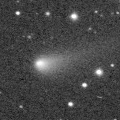
|
Now it is 13.2 mag (Apr. 8, Ken-ichi Kadota). It is observable at 13 mag in good condition until early summer.
Date(TT) R.A. (2000) Decl. Delta r Elong. m1 Best Time(A, h)
Apr. 16 9 29.10 18 1.7 1.701 2.289 113 13.6 20:01 ( 8, 73)
Apr. 23 9 33.29 17 24.6 1.763 2.276 107 13.7 20:09 ( 30, 70)
|
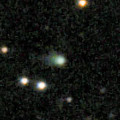
|
Now it is 14.0 mag (Apr. 6, Ken-ichi Kadota). It is expected to brighten up to 11 mag in 2023. In the Northern Hemisphere, it stays observable in good condition for a long time. In the Southern Hemisphere, it locates extremely low in 2022, but it will be observable in good condition in 2023.
Date(TT) R.A. (2000) Decl. Delta r Elong. m1 Best Time(A, h)
Apr. 16 15 52.04 42 39.1 4.180 4.746 118 13.8 2:17 (180, 82)
Apr. 23 15 40.06 43 15.0 4.124 4.708 119 13.7 1:38 (180, 82)
|

|
Now it is 15.5 mag (Apr. 5, Slooh.com Chile Observatory). It will brighten up to 12.5 mag in summer. In the Southern Hemisphere, it stays observable in excellent condition for a long time. In the Northern Hemisphere, it is not observable until August.
Date(TT) R.A. (2000) Decl. Delta r Elong. m1 Best Time(A, h)
Apr. 16 22 48.87 -54 19.8 3.471 3.323 73 13.9 3:58 (322,-22)
Apr. 23 22 48.30 -54 45.2 3.343 3.292 78 13.8 3:47 (324,-20)
|
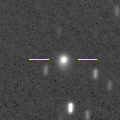
|
Now it is 13.0 mag (Apr. 10, Masayoshi Yoshimi). It is expected to brighten up to 10 mag in 2023. In the Northern Hemisphere, it stays observable in good condition until 2023 autumn. In the Southern Hemipshere, it stays unobservable until 2023 summer.
Date(TT) R.A. (2000) Decl. Delta r Elong. m1 Best Time(A, h)
Apr. 16 10 55.71 61 32.1 4.331 4.645 102 13.9 21:17 (180, 64)
Apr. 23 10 42.12 61 25.8 4.364 4.588 96 13.8 20:36 (180, 64)
|

|
Now it is 14.1 mag (Apr. 14, iTelescope Observatory, Siding Spring). It will brighten up to 13 mag in summer.
Date(TT) R.A. (2000) Decl. Delta r Elong. m1 Best Time(A, h)
Apr. 16 18 58.50 -27 5.4 2.688 3.067 102 13.9 3:58 (339, 25)
Apr. 23 19 2.90 -27 22.4 2.592 3.063 108 13.8 3:47 (342, 25)
|

|
Now it is fainter than 14.3 mag (Mar. 22, Chris Wyatt). It is observable until April in the Southern Hemisphere, or until May in the Northern Hemisphere.
Date(TT) R.A. (2000) Decl. Delta r Elong. m1 Best Time(A, h)
Apr. 16 4 46.06 29 3.2 6.594 5.976 48 13.9 20:01 (107, 29)
Apr. 23 4 51.31 29 4.3 6.677 5.978 42 13.9 20:09 (110, 23)
|
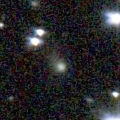
|
Now it is 14.6 mag (Apr. 10, Michael Jager). It is expected to brighten up to 11 mag in 2023. In the Northern Hemisphere, it stays observable in good condition until November. But it becomes unobservable after that. In the Southern Hemisphere, it stays observable in good condition after this.
Date(TT) R.A. (2000) Decl. Delta r Elong. m1 Best Time(A, h)
Apr. 16 19 2.47 18 36.2 4.575 4.759 94 14.4 3:58 (304, 64)
Apr. 23 19 1.37 18 46.9 4.437 4.713 99 14.3 3:47 (311, 67)
|
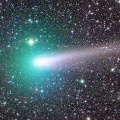
|
It brightened up to 8.5 mag from autumn to winter (Dec. 2, Toshihiko Ikemura, Hirohisa Sato). Now it is fading. It has already faded down to 13.7 mag (Apr. 5, Chris Wyatt). It stays observable in good condition for a long time.
Date(TT) R.A. (2000) Decl. Delta r Elong. m1 Best Time(A, h)
Apr. 16 8 58.69 21 35.3 1.722 2.209 105 14.6 20:01 ( 35, 74)
Apr. 23 9 6.73 20 43.6 1.853 2.263 100 14.9 20:09 ( 50, 69)
|

|
It brightened up to 12.3 mag from spring to summer (June 15, Marco Goiato). Now it is fading. It has already faded down to 14.9 mag (Apr. 5, Chris Wyatt).
Date(TT) R.A. (2000) Decl. Delta r Elong. m1 Best Time(A, h)
Apr. 16 13 0.76 28 59.5 3.884 4.699 140 14.8 23:22 ( 0, 84)
Apr. 23 12 50.97 29 57.7 3.983 4.741 134 14.9 22:44 ( 0, 85)
|
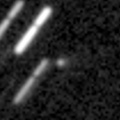
|
Now it is 16.3 mag (Apr. 2, Hirohisa Sato). It is expected to brighten up to 11 mag from summer to autumn. It stays observable in good condition in the Southern Hemisphere. In the Northern Hemisphere, it becomes extremely low from August to September.
Date(TT) R.A. (2000) Decl. Delta r Elong. m1 Best Time(A, h)
Apr. 16 9 40.41 31 7.5 1.335 1.929 110 15.0 20:03 ( 0, 86)
Apr. 23 9 39.05 30 22.1 1.349 1.866 103 14.8 20:09 ( 60, 81)
|

|
Now it is 14.8 mag (Apr. 15, iTelescope Observatory, Siding Spring). It stays at 15-16 mag for a long time. In the Southern Hemisphere, it stays observable in excellent condition for a long time. In the Northern Hemiphere, it locates extremely low in spring.
Date(TT) R.A. (2000) Decl. Delta r Elong. m1 Best Time(A, h)
Apr. 16 16 57.87 -45 6.6 4.517 5.149 124 14.9 3:24 ( 0, 10)
Apr. 23 16 49.60 -46 17.5 4.447 5.163 130 14.9 2:48 ( 0, 9)
|
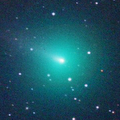
|
It brightened very rapidly up to 9.2 mag in winter (Jan. 31, Chris Wyatt). Now it is fading. But it is still bright as 12.6 mag (Apr. 5, Chris Wyatt). It will be fainter than 18 mag in May.
Date(TT) R.A. (2000) Decl. Delta r Elong. m1 Best Time(A, h)
Apr. 16 7 47.79 15 12.6 1.248 1.607 90 15.1 20:01 ( 58, 58)
Apr. 23 8 8.47 14 44.5 1.354 1.666 88 15.8 20:09 ( 62, 55)
|
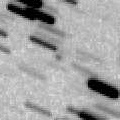
|
It is expected to brighten up to 13.5 mag in early summer. In the Southern Hemisphere, it will appear in the morning sky in May. Then it stays observable in good condition after that. In the Northern Hemisphere, it is not observable at all.
Date(TT) R.A. (2000) Decl. Delta r Elong. m1 Best Time(A, h)
Apr. 16 2 0.11 -8 11.6 2.394 1.483 19 15.6 20:01 ( 98,-25)
Apr. 23 2 8.36 -9 54.3 2.308 1.430 22 15.4 20:09 (100,-31)
|
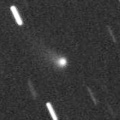
|
Now it is 15.1 mag (Apr. 5, Chris Wyatt). It became brighter after the perihelion passage. It will be fading after this, and it will be fainter than 18 mag in summer.
Date(TT) R.A. (2000) Decl. Delta r Elong. m1 Best Time(A, h)
Apr. 16 10 50.12 6 28.5 3.013 3.796 135 15.4 21:12 ( 0, 61)
Apr. 23 10 42.62 5 44.1 3.142 3.837 127 15.6 20:37 ( 0, 61)
|
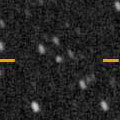
|
Now it is 15.9 mag (Apr. 10, Michael Jager). It will approach to Earth down to 0.29 a.u. in 2023 February, and it is expected to brighten up to 5 mag. In the Northern Hemisphere, it stays observable in excellent condition. In the Southern Hemisphere, it becomes unobservable from late September to early February.
Date(TT) R.A. (2000) Decl. Delta r Elong. m1 Best Time(A, h)
Apr. 16 20 14.19 9 41.7 3.877 3.813 78 15.8 3:58 (295, 45)
Apr. 23 20 14.41 11 18.9 3.700 3.739 84 15.6 3:47 (297, 50)
|
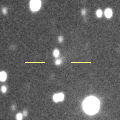
|
Now it is 15.7 mag (Mar. 28, ATLAS-MLO, Mauna Loa). It continues brightening even after the perihelion passage. It is observable at 15 mag in good condition for a while.
Date(TT) R.A. (2000) Decl. Delta r Elong. m1 Best Time(A, h)
Apr. 16 10 26.69 0 27.3 1.737 2.521 131 15.6 20:49 ( 0, 55)
Apr. 23 10 31.32 2 33.2 1.827 2.549 125 15.7 20:26 ( 0, 58)
|
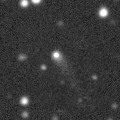
|
Now it is 15.7 mag (Apr. 10, Michael Jager). It stays observable at 16 mag from 2021 to 2022.
Date(TT) R.A. (2000) Decl. Delta r Elong. m1 Best Time(A, h)
Apr. 16 16 14.69 34 15.8 4.350 4.953 121 15.8 2:40 ( 0, 89)
Apr. 23 16 11.35 35 55.1 4.354 4.971 122 15.8 2:09 (180, 89)
|

|
It approaches to Sun down to 0.14 a.u. on May 15. But it is not observable around that time. In the Northern Hemisphere, it will appear in the morning sky at 16 mag in June. It is hardly observable in the Southern Hemisphere.
Date(TT) R.A. (2000) Decl. Delta r Elong. m1 Best Time(A, h)
Apr. 16 3 23.96 18 8.9 1.576 0.829 27 16.3 20:01 (107, 8)
Apr. 23 3 38.30 17 55.1 1.470 0.687 24 15.8 20:09 (110, 3)
|

|
Now it is 19.2 mag (Mar. 28, Slooh.com Chile Observatory). It was expected to be observable at 16 mag in good condition in spring. But actually, it is fainter than predicted by 3 mag.
Date(TT) R.A. (2000) Decl. Delta r Elong. m1 Best Time(A, h)
Apr. 16 20 2.25 -21 49.3 1.085 1.445 87 16.1 3:58 (322, 23)
Apr. 23 20 18.93 -19 0.3 1.057 1.458 89 16.1 3:47 (321, 25)
|
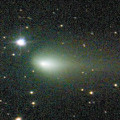
|
It brightened up to 10.6 mag in autumn (Oct. 10, Osamu Miyazaki). Now it is fading. It has already faded down to 14.4 mag (Apr. 4, Toshihiko Ikemura, Hirohisa Sato). It stays observable in good condition for a long time.
Date(TT) R.A. (2000) Decl. Delta r Elong. m1 Best Time(A, h)
Apr. 16 7 19.87 14 50.9 2.514 2.604 83 16.2 20:01 ( 66, 53)
Apr. 23 7 29.19 14 52.7 2.644 2.647 79 16.5 20:09 ( 72, 48)
|
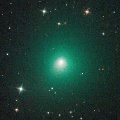
|
It brightened up to 9.5 mag in early summer in 2021 (June 27, Marco Goiato). Now it is fading. It has faded down to 12.7 mag in autumn (Nov. 22, Thomas Lehmann). In the Southern Hemisphere, it is appearing in the morning sky. In the Northern Hemisphere, it is not observable until June when the comet will fade down to 17 mag.
Date(TT) R.A. (2000) Decl. Delta r Elong. m1 Best Time(A, h)
Apr. 16 22 34.48 -30 41.9 4.136 3.727 59 16.3 3:58 (303, -6)
Apr. 23 22 42.36 -30 45.0 4.112 3.786 64 16.4 3:47 (304, -5)
|
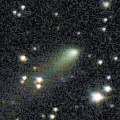
|
Now it is 16.4 mag (Mar. 22, Thomas Lehmann). It will be fading after this. In the Northern Hemisphere, it stays observable in good condition for a long time. It locates low in the Southern Hemisphere.
Date(TT) R.A. (2000) Decl. Delta r Elong. m1 Best Time(A, h)
Apr. 16 12 43.20 45 11.3 2.480 3.149 123 16.5 23:03 (180, 80)
Apr. 23 12 20.95 44 19.0 2.588 3.198 118 16.7 22:14 (180, 81)
|
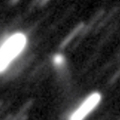
|
Now it is 16.6 mag (Apr. 12, Hirohisa Sato). It was observed at 15 mag in 2021. Now it is fading. It stays observable at 16-17 mag for a while in 2022.
Date(TT) R.A. (2000) Decl. Delta r Elong. m1 Best Time(A, h)
Apr. 16 18 47.50 16 1.9 4.936 5.181 98 16.6 3:58 (314, 65)
Apr. 23 18 47.08 17 36.7 4.874 5.200 103 16.6 3:47 (320, 68)
|
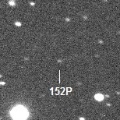
|
Now it is 17.1 mag (Apr. 2, A. Maury, G. Attard, D. Parrott). It will brighten up to 16 mag from spring to summer. It locates somewhat low in the Northern Hemisphere.
Date(TT) R.A. (2000) Decl. Delta r Elong. m1 Best Time(A, h)
Apr. 16 19 41.22 -21 56.5 2.930 3.135 92 16.6 3:58 (327, 26)
Apr. 23 19 46.61 -22 0.6 2.841 3.141 97 16.6 3:47 (330, 27)
|
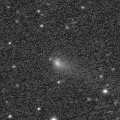
|
Now it is 16.1 mag (Apr. 2, Masayoshi Yoshimi). It will be fading after this, and it will be fainter than 18 mag in June.
Date(TT) R.A. (2000) Decl. Delta r Elong. m1 Best Time(A, h)
Apr. 16 11 22.27 13 58.4 1.537 2.388 139 16.6 21:44 ( 0, 69)
Apr. 23 11 22.11 13 45.9 1.619 2.417 132 16.8 21:17 ( 0, 69)
|

|
It brightened up to 14 mag from 2020 to 2021. Now it is fading slowly. It is observable at 16.5-17 mag in 2022.
Date(TT) R.A. (2000) Decl. Delta r Elong. m1 Best Time(A, h)
Apr. 16 23 34.72 -16 55.0 4.258 3.550 40 16.6 3:58 (284,-10)
Apr. 23 23 43.04 -16 18.6 4.213 3.568 44 16.6 3:47 (284, -8)
|
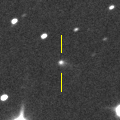
|
Now it is 17.1 mag (Apr. 2, D. Buczynski). It will brighten up to 14 mag in early 2023. It becomes unobservable temporarily in May. But it will appear in the morning sky again in August.
Date(TT) R.A. (2000) Decl. Delta r Elong. m1 Best Time(A, h)
Apr. 16 4 55.08 12 11.7 4.933 4.342 49 16.6 20:01 ( 89, 23)
Apr. 23 5 1.73 12 47.1 4.970 4.303 43 16.6 20:09 ( 94, 17)
|
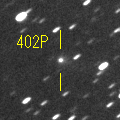
|
First return of a new periodic comet observed at 16 mag from 2003 to 2004. Now it is 16.6 mag (Apr. 9, Hirohisa Sato). It will be unobservable in June. But it will become observable again at 17 mag from autum to winter.
Date(TT) R.A. (2000) Decl. Delta r Elong. m1 Best Time(A, h)
Apr. 16 6 26.32 16 5.2 4.215 4.000 70 16.6 20:01 ( 79, 43)
Apr. 23 6 32.39 16 39.0 4.319 4.007 65 16.7 20:09 ( 84, 38)
|

|
Now it is 16.4 mag (Apr. 15, ATLAS Chile). It stays observable at 16-17 mag in April. However, it will fade out rapidly, and it will be fainter than 18 mag in late May. It is observable in excellent condition in the Southern Hemisphere. It is not observable at all in the Northern Hemisphere.
Date(TT) R.A. (2000) Decl. Delta r Elong. m1 Best Time(A, h)
Apr. 16 20 20.33 -78 54.8 1.140 1.615 97 16.9 3:58 (352,-26)
Apr. 23 0 51.32 -85 21.9 1.159 1.635 97 17.0 3:47 (354,-36)
|
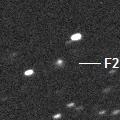
|
Now it is 16.9 mag (Apr. 12, Catalina Sky Survey). It stays observable at 17-18 mag for a long time until 2024.
Date(TT) R.A. (2000) Decl. Delta r Elong. m1 Best Time(A, h)
Apr. 16 14 2.83 0 59.3 7.852 8.833 167 16.9 0:29 ( 0, 56)
Apr. 23 13 58.14 1 31.2 7.851 8.831 166 16.9 23:52 ( 0, 56)
|
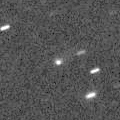
|
Now it is 16.7 mag (Mar. 25, F. Kugel, J.-G. Bosch, J. Nicolas). It stays 17 mag for a while.
Date(TT) R.A. (2000) Decl. Delta r Elong. m1 Best Time(A, h)
Apr. 16 13 24.99 -8 26.6 3.704 4.706 177 17.0 23:46 ( 0, 46)
Apr. 23 13 21.53 -8 10.7 3.715 4.706 169 17.0 23:15 ( 0, 47)
|

|
Now it is 16.7 mag (Apr. 3, Catalina Sky Survey). Fading slowly. In the Northern Hemisphere, it stays observable in good condition for a long time. In the Southern Hemisphere, it is not observable after this.
Date(TT) R.A. (2000) Decl. Delta r Elong. m1 Best Time(A, h)
Apr. 16 19 23.87 60 0.0 9.194 9.124 82 17.0 3:58 (207, 59)
Apr. 23 19 22.28 61 4.0 9.187 9.134 83 17.0 3:47 (202, 60)
|

|
Now it is 17.4 mag (Apr. 7, ATLAS Chile). It stays 17 mag for a long time from 2021 to 2022. In the Southern Hemisphere, it stays observable in good condition for a long time. In the Northern Hemisphere, it locates extremely low, and it is observable only until April.
Date(TT) R.A. (2000) Decl. Delta r Elong. m1 Best Time(A, h)
Apr. 16 6 40.50 -42 47.4 5.412 5.451 86 17.1 20:01 ( 31, 2)
Apr. 23 6 40.09 -42 17.1 5.477 5.462 83 17.1 20:09 ( 37, -2)
|
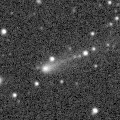
|
It brightened rapidly up to 14.5 mag in winter (Feb. 9, Toshiyuki Takahashi). Now it is fading rapidly. It has already faded down to 17.0 mag (Mar. 30, D. Buczynski). It will be fainter than 18 mag in May.
Date(TT) R.A. (2000) Decl. Delta r Elong. m1 Best Time(A, h)
Apr. 16 8 10.26 11 56.5 2.381 2.685 96 17.1 20:01 ( 46, 59)
Apr. 23 8 16.74 11 34.3 2.486 2.701 91 17.3 20:09 ( 56, 55)
|
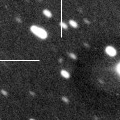
|
Now it is 16.8 mag (Apr. 16, ATLAS Chile). It will brighten up to 13-14 mag from 2024 to 2025.
Date(TT) R.A. (2000) Decl. Delta r Elong. m1 Best Time(A, h)
Apr. 16 7 12.83 -26 54.9 8.063 8.118 89 17.1 20:01 ( 34, 19)
Apr. 23 7 14.78 -26 25.2 8.100 8.080 85 17.1 20:09 ( 41, 15)
|
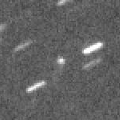
|
Now it is 16.8 mag (Apr. 6, Ken-ichi Kadota). It started fading before the perihelion passage. It was predicted to stay at 16 mag for a long time. But actually, it will be fainter than 18 mag in autumn. In the Northern Hemisphere, it stays observable in good condition for a long time. In the Southern Hemisphere, it is not observable until 2023.
Date(TT) R.A. (2000) Decl. Delta r Elong. m1 Best Time(A, h)
Apr. 16 0 13.37 75 27.1 4.043 3.757 66 17.4 3:58 (197, 31)
Apr. 23 0 17.07 75 56.3 4.067 3.756 65 17.4 3:47 (196, 32)
|
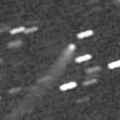
|
It brightened up to 14.2 mag from summer to autumn in 2021 (Sept. 3, C. S. Morris). Now it is 17.3 mag (Apr. 13, Catalina Sky Survey). Fading slowly. In the Northern Hemisphere, it is observable in good condition. It is not observable in the Southern Hemisphere.
Date(TT) R.A. (2000) Decl. Delta r Elong. m1 Best Time(A, h)
Apr. 16 16 22.38 67 50.0 6.667 6.857 96 17.5 2:47 (180, 57)
Apr. 23 16 9.25 68 38.7 6.720 6.896 95 17.5 2:06 (180, 56)
|
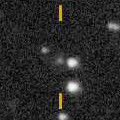
|
Now it is 17.5 mag (Apr. 9, Ken-ichi Kadota). It is expected to brighten up to 12.5 mag in winter. It will become unobservable temporarily at 17 mag in July. In the Northern Hemisphere, it will become observable again in October. Then it stays observable in good condition after that. In the Southern Hemisphere, it is not observable at the high light.
Date(TT) R.A. (2000) Decl. Delta r Elong. m1 Best Time(A, h)
Apr. 16 10 47.61 -4 15.2 3.200 4.003 138 17.5 21:09 ( 0, 51)
Apr. 23 10 41.96 -2 22.2 3.220 3.938 129 17.5 20:36 ( 0, 53)
|

|
It has not been observed yet in this apparition. appearing in the morning sky. It will brighten up to 15 mag in autumn, and it will be observable in good condition.
Date(TT) R.A. (2000) Decl. Delta r Elong. m1 Best Time(A, h)
Apr. 16 22 35.71 -6 52.6 3.113 2.549 47 17.6 3:58 (284, 8)
Apr. 23 22 47.41 -5 49.6 3.023 2.523 51 17.5 3:47 (284, 9)
|
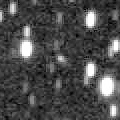
|
Now it is 17.6 mag (Apr. 10, Ken-ichi Kadota). It stayed 17.5 mag for a long time in 2021. It will be fading slowly after this. In the Northern Hemisphere, it is observable in good condition. It is not observable in the Southern Hemisphere.
Date(TT) R.A. (2000) Decl. Delta r Elong. m1 Best Time(A, h)
Apr. 16 11 55.10 69 42.9 6.993 7.210 98 17.6 22:17 (180, 55)
Apr. 23 11 48.36 68 53.7 7.060 7.225 95 17.6 21:42 (180, 56)
|
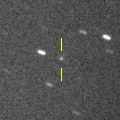
|
Now it is 17.7 mag (Apr. 6, ATLAS Chile). It will brighten up to 16 mag in 2023. In the Southern Hemisphere, it stays observable in good condition for a long time. In the Northern Hemisphere, it is observable only until May.
Date(TT) R.A. (2000) Decl. Delta r Elong. m1 Best Time(A, h)
Apr. 16 9 39.78 -16 24.7 3.659 4.282 122 17.6 20:02 ( 0, 38)
Apr. 23 9 37.55 -16 23.9 3.700 4.242 116 17.6 20:09 ( 11, 38)
|
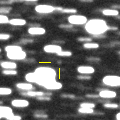
|
Now it is 16.7 mag (Mar. 25, F. Kugel, J.-G. Bosch, J. Nicolas). It will brighten up to 15-16 mag in 2023. Cometary activity was detected by Cristovao Jacques on Dec. 12, and by Luca Buzzi and Andrea Aletti on Feb. 23.
Date(TT) R.A. (2000) Decl. Delta r Elong. m1 Best Time(A, h)
Apr. 16 6 18.11 -14 32.0 5.105 4.928 74 17.7 20:01 ( 53, 21)
Apr. 23 6 17.17 -13 42.9 5.160 4.883 68 17.7 20:09 ( 60, 16)
|
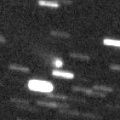
|
Now it is 17.1 mag (Feb. 28, Hidetaka Sato). It was observed at 16 mag from 2020 to 2021. Now it is fading. It will be fainter than 18 mag in May.
Date(TT) R.A. (2000) Decl. Delta r Elong. m1 Best Time(A, h)
Apr. 16 14 44.88 -42 27.2 5.343 6.184 144 17.7 1:11 ( 0, 12)
Apr. 23 14 35.38 -42 32.6 5.336 6.218 148 17.7 0:34 ( 0, 12)
|
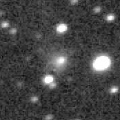
|
It was observed at 16 mag from 2020 to 2021. Now it is fading. It will be fainter than 18 mag in summer.
Date(TT) R.A. (2000) Decl. Delta r Elong. m1 Best Time(A, h)
Apr. 16 22 23.21 15 19.1 7.240 6.598 47 17.8 3:58 (267, 23)
Apr. 23 22 24.74 15 21.0 7.182 6.619 52 17.8 3:47 (269, 26)
|

|
Now it is 18.0 mag (Apr. 12, Ken-ichi Kadota). In the Northern Hemisphere, it stays observable for a long time while it is getting fainter slowly. It locates extremely low in the Southern Hemisphere.
Date(TT) R.A. (2000) Decl. Delta r Elong. m1 Best Time(A, h)
Apr. 16 14 18.22 47 23.5 7.592 8.167 121 17.8 0:44 (180, 78)
Apr. 23 14 12.87 47 20.4 7.661 8.214 120 17.8 0:11 (180, 78)
|
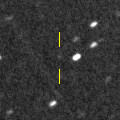
|
Now it is 17.5 mag (Mar. 31, J. McCormick). It is expected to brighten up to 12-13 mag from 2024 to 2025.
Date(TT) R.A. (2000) Decl. Delta r Elong. m1 Best Time(A, h)
Apr. 16 10 2.65 -27 16.3 7.404 8.050 127 17.9 20:25 ( 0, 28)
Apr. 23 9 59.80 -26 22.8 7.430 8.006 121 17.9 20:09 ( 4, 28)
|
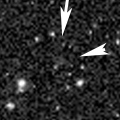
|
Now it is 17.2 mag (Apr. 11, ATLAS Chile). Very far object. It stays 18 mag for a long time from 2021 to 2026. In the Southern Hemisphere, it stays observable in good condition for a long time. In the Northern Hemisphere, it is not observable at all.
Date(TT) R.A. (2000) Decl. Delta r Elong. m1 Best Time(A, h)
Apr. 16 7 28.85 -65 11.3 10.573 10.764 98 17.9 20:01 ( 14,-13)
Apr. 23 7 27.47 -64 41.9 10.575 10.754 97 17.9 20:09 ( 17,-15)
|
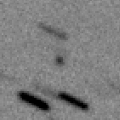
|
Now it is 17.4 mag (Mar. 30, D. Buczynski). It is observable in good condition in the Northern Hemisphere, but it locates low in the Southern Hemisphere. It will be fainter than 18 mag soon.
Date(TT) R.A. (2000) Decl. Delta r Elong. m1 Best Time(A, h)
Apr. 16 6 36.44 33 0.1 2.564 2.454 72 17.9 20:01 (100, 53)
Apr. 23 6 49.19 32 55.5 2.643 2.455 68 18.0 20:09 (102, 48)
|
|
![]()
 C/2021 F1 ( Lemmon-PanSTARRS )
C/2021 F1 ( Lemmon-PanSTARRS ) C/2017 K2 ( PanSTARRS )
C/2017 K2 ( PanSTARRS ) C/2019 L3 ( ATLAS )
C/2019 L3 ( ATLAS ) 22P/Kopff
22P/Kopff C/2019 T4 ( ATLAS )
C/2019 T4 ( ATLAS ) 19P/Borrelly
19P/Borrelly C/2021 E3 ( ZTF )
C/2021 E3 ( ZTF ) 9P/Tempel 1
9P/Tempel 1 C/2021 A1 ( Leonard )
C/2021 A1 ( Leonard ) C/2020 Y2 ( ATLAS )
C/2020 Y2 ( ATLAS ) C/2021 P4 ( ATLAS )
C/2021 P4 ( ATLAS ) 116P/Wild 4
116P/Wild 4 C/2019 U5 ( PanSTARRS )
C/2019 U5 ( PanSTARRS ) C/2020 R7 ( ATLAS )
C/2020 R7 ( ATLAS ) C/2020 V2 ( ZTF )
C/2020 V2 ( ZTF ) 117P/Helin-Roman-Alu 1
117P/Helin-Roman-Alu 1 29P/Schwassmann-Wachmann 1
29P/Schwassmann-Wachmann 1 C/2020 K1 ( PanSTARRS )
C/2020 K1 ( PanSTARRS ) 67P/Churyumov-Gerasimenko
67P/Churyumov-Gerasimenko C/2020 J1 ( SONEAR )
C/2020 J1 ( SONEAR ) 73P/Schwassmann-Wachmann 3
73P/Schwassmann-Wachmann 3 C/2018 U1 ( Lemmon )
C/2018 U1 ( Lemmon ) 104P/Kowal 2
104P/Kowal 2 C/2021 T2 ( Fuls )
C/2021 T2 ( Fuls ) C/2020 M5 ( ATLAS )
C/2020 M5 ( ATLAS ) C/2022 E3 ( ZTF )
C/2022 E3 ( ZTF ) C/2021 U5 ( Catalina )
C/2021 U5 ( Catalina ) C/2020 H6 ( ATLAS )
C/2020 H6 ( ATLAS ) (3200) Phaethon
(3200) Phaethon 325P/Yang-Gao
325P/Yang-Gao 4P/Faye
4P/Faye C/2020 T2 ( Palomar )
C/2020 T2 ( Palomar ) C/2020 PV6 ( PanSTARRS )
C/2020 PV6 ( PanSTARRS ) C/2020 O2 ( Amaral )
C/2020 O2 ( Amaral ) 152P/Helin-Lawrence
152P/Helin-Lawrence 70P/Kojima
70P/Kojima 246P/NEAT
246P/NEAT C/2020 S4 ( PanSTARRS )
C/2020 S4 ( PanSTARRS ) 402P/2020 Q3 ( LINEAR )
402P/2020 Q3 ( LINEAR ) C/2022 F2 ( NEOWISE )
C/2022 F2 ( NEOWISE ) C/2020 F2 ( ATLAS )
C/2020 F2 ( ATLAS ) 99P/Kowal 1
99P/Kowal 1 C/2019 O3 ( Palomar )
C/2019 O3 ( Palomar ) C/2020 F7 ( Lemmon )
C/2020 F7 ( Lemmon ) 110P/Hartley 3
110P/Hartley 3 C/2021 G2 ( ATLAS )
C/2021 G2 ( ATLAS ) C/2020 U5 ( PanSTARRS )
C/2020 U5 ( PanSTARRS ) C/2019 K7 ( Smith )
C/2019 K7 ( Smith ) C/2022 A2 ( PanSTARRS )
C/2022 A2 ( PanSTARRS ) 61P/Shajn-Schaldach
61P/Shajn-Schaldach C/2020 P3 ( ATLAS )
C/2020 P3 ( ATLAS ) C/2021 C5 ( PanSTARRS )
C/2021 C5 ( PanSTARRS ) A/2021 X1
A/2021 X1 C/2017 Y2 ( PanSTARRS )
C/2017 Y2 ( PanSTARRS ) C/2019 T3 ( ATLAS )
C/2019 T3 ( ATLAS ) C/2018 N2 ( ASASSN )
C/2018 N2 ( ASASSN ) C/2022 E2 ( ATLAS )
C/2022 E2 ( ATLAS ) C/2019 E3 ( ATLAS )
C/2019 E3 ( ATLAS ) 274P/Tombaugh-Tenagra
274P/Tombaugh-Tenagra![]()























































